1. Finding optimum location
Although in general, the calculation of the reactive power to be installed is initially carried out globally, it is advisable not to be swayed by the apparent simplicity of this process, and to look further for the optimum locations for more targeted compensation, referred to as “sector” or even “individual” compensation.
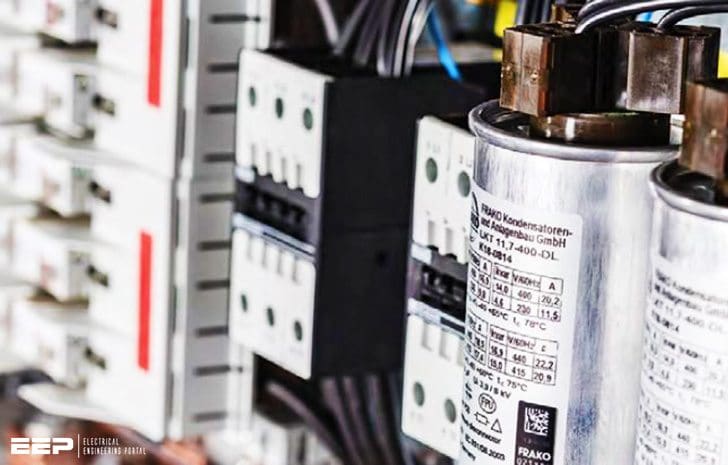
The choice of capacitors and the type of operation of the bank (fixed or automatic) can then be adapted to provide better efficiency and a quicker return on investment.
In all cases, the active and reactive powers must be determined first of all and as far as possible the profile of the consumptions at the various places in the installation where capacitors may be located. The analysis of this data enables the values of the minimum, average and maximum reactive powers to be supplied at each point studied to be determined.
A dedicated automatic capacitor bank would be much more effective in this case.
A local or individual reactive energy demand that is greater than 50% of the global demand can be considered to justify specific compensation.
Contents:
- 1. Finding optimum location
- Reactive compensation of asynchronous motors
- Reactive compensation of transformers
1.1. Global compensation
When the load does not vary, global compensation is suitable and provides the best savings and performance compromise.
High voltage global compensation
The capacitor bank is connected upstream of the HV/lV transformer.
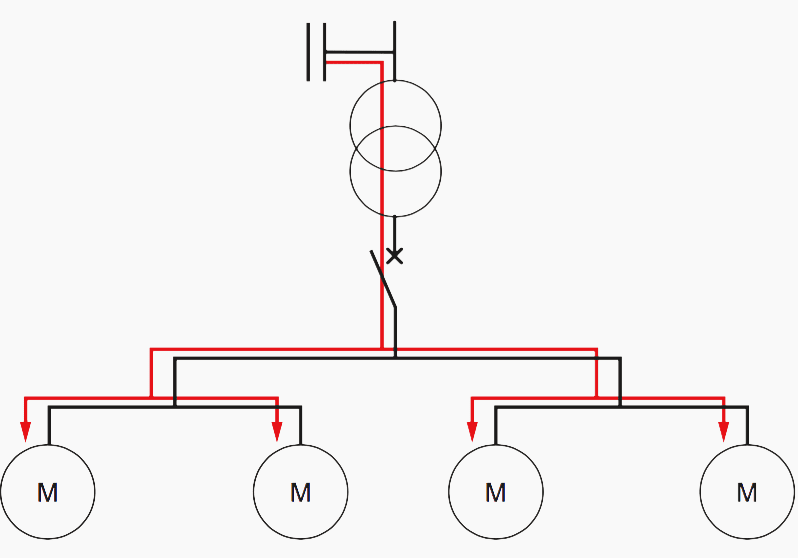

The additional cost connected with high voltage insulation rules out any benefit of using this for low power compensation (apart from in the case of individual requirements).
The median value of 1000 kvar is the level above which the installation of an HV capacitor bank can be considered, as the supply currents and ratings of the associated protection devices can become prohibitive in low voltage at this level.
Low voltage global compensation


The capacitor bank is connected to the main distribution board and provides compensation for the whole installation. It remains in operation permanently, at least during the reactive energy billing period for normal operation of the site.
Mixed compensation
This can combine the advantages of high voltage global compensation with low voltage sector compensation. But it may also concern high voltage compensation (on a specific receiver) combined with global compensation that may be low voltage.
1.2. Sector compensation
The capacitor bank is connected in the distribution board at the head of a circuit or a group of circuits, or better still in the distribution switchboard of the sector concerned, and supplies the reactive energy required by one sector of the installation.
A large part of the installation is thus freed from the consumption of reactive power.
As with any compensation, the important point is to eliminate the penalties for excessive consumption of reactive energy and increase the transformer’s available active power.
At the same time, the currents carried upstream of the compensated sector and the associated ohmic losses are reduced. The active power availability (kW) is increased. But a risk of over-compensation if there are significant load variations must be taken into account. this risk can be eliminated by installing step capacitor banks.


Sector compensation is recommended when the installation covers a large area and when it contains sectors with high or mixed reactive energy consumption. High voltage compensation can also be used in sectors when it is applied to very high power motors for example, which are often supplied with high voltage.
1.3. Individual compensation
In this configuration, the capacitor bank is connected directly to the terminals of the receiver (motor, variable control unit, furnace, etc.). the compensation produces the right amount of reactive energy at the location where it is consumed.
This is the type of compensation that offers the most advantages but which is the most costly.
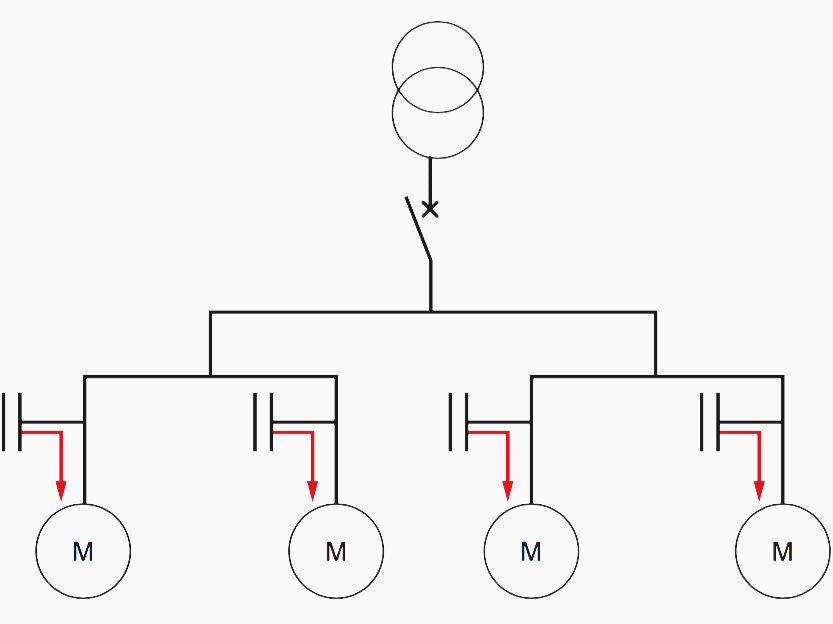

as well as eliminating the penalties for excessive consumption of reactive energy and increasing the transformer’s available active power, the main advantage of this type of compensation is the limitation of the currents carried in the busbars located upstream of the receiver, thus reducing the heat losses (kWh) and voltage drops in the busbars.
Consideration of the layout of the capacitor banks and their distribution is of primary importance. The savings made and achieving the required flexibility of operation will depend on these choices.
2. Reactive compensation of asynchronous motors
(compensation at the motor terminals)
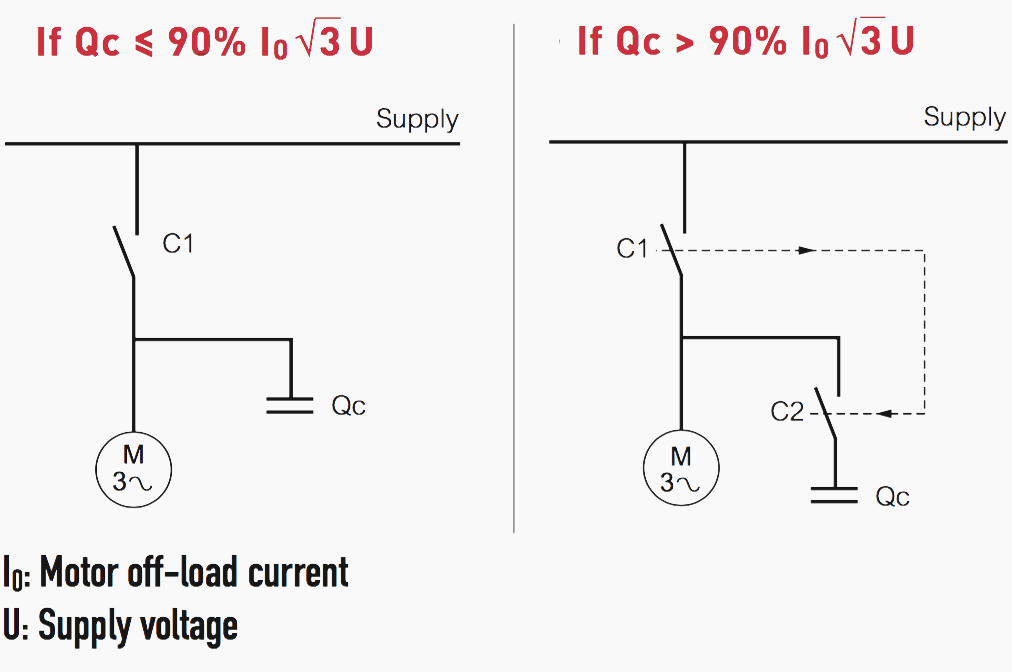

The table below gives, for information purposes only, the maximum capacitor power that can be connected directly to the terminals of an asynchronous motor without any risk of self-excitation. It will be necessary to check in all cases that the maximum current of the capacitor does not exceed 90% of the magnetising current (off-load) of the motor.
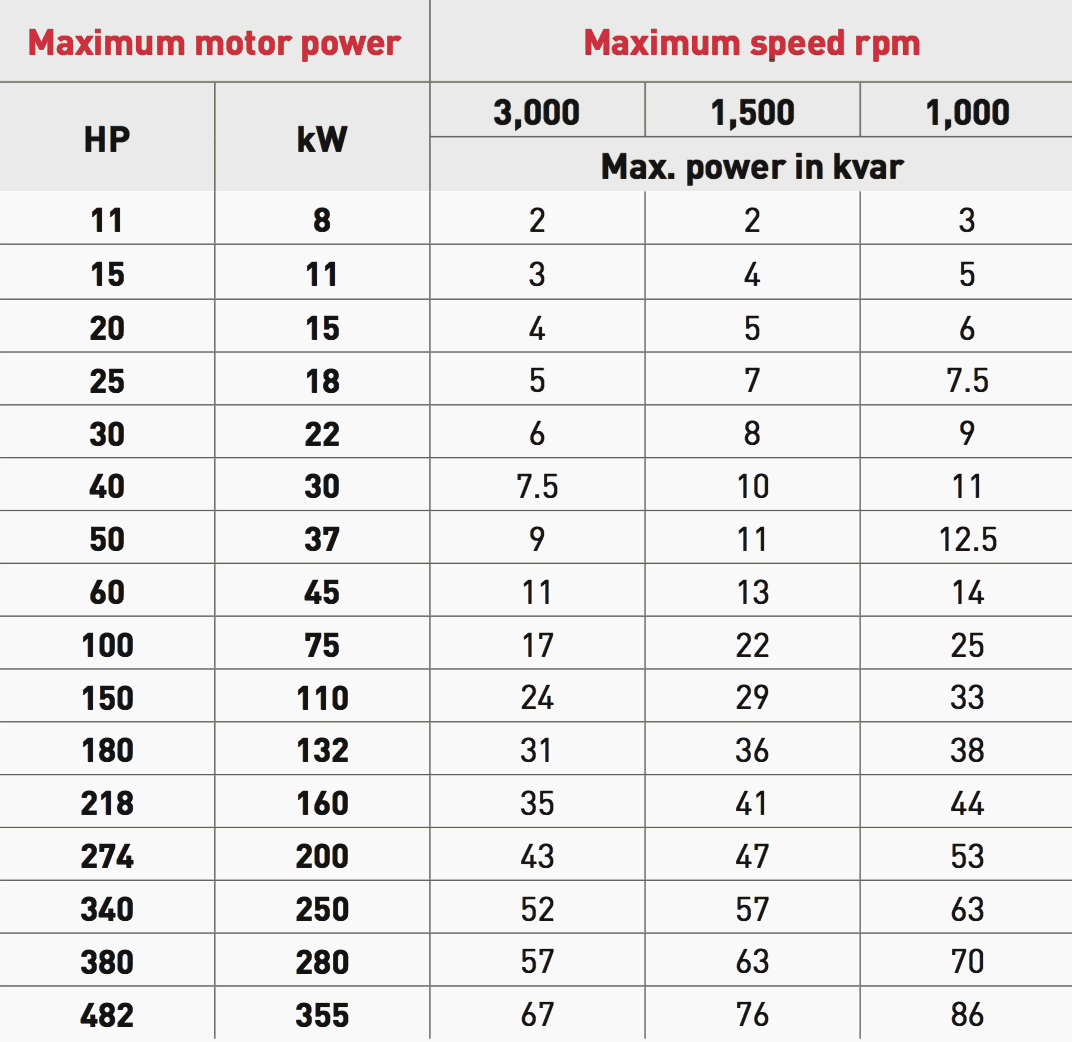

If the capacitor power required to compensate the motor is greater than the values given in the previous table or if, more generally:
Qc > 0.9 × I0 × √3 U
compensation at the motor terminals will however remain possible by inserting a contactor (c2), controlled by an auxiliary contact of the motor contactor (c1), in series with the capacitor.
3. Reactive compensation of transformers
In order to operate correctly, a transformer requires internal reactive energy to magnetize its windings. the table opposite gives, for information purposes only, the value of the fixed capacitor bank to be installed according to the powers and loads of the transformer.
These values may change, depending on the technology of the device. Each manufacturer can provide their own precise values.
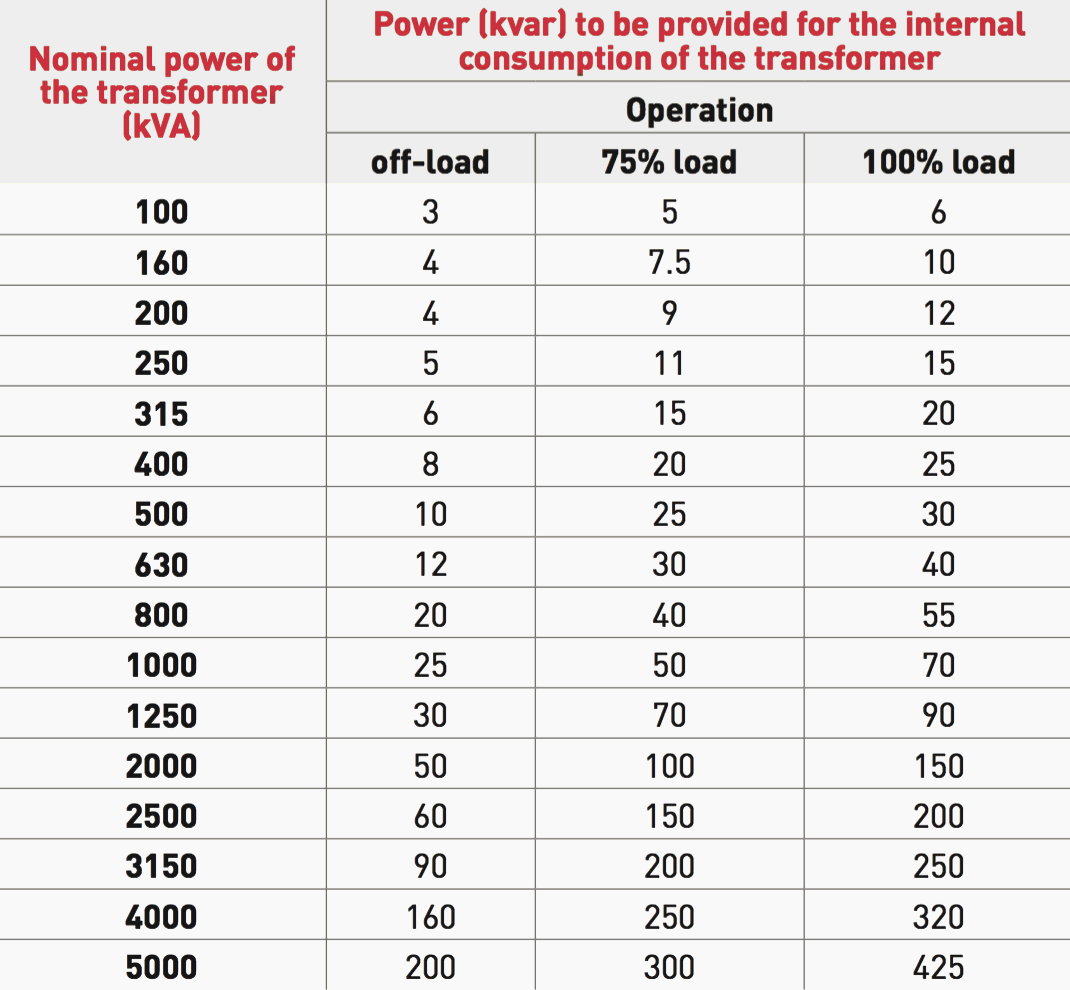

When defining a reactive energy compensation installation, it is advisable to provide a fixed capacitor corresponding to the internal reactive consumption of the transformer at 75% load.
Reference // Electrical energy supply by Legrand











Sound good, Thank you for sharing
I want to know in details installation of power factor improver for 500kva industry and setting of the controller
Please send File or Video for Me, ThanksYou very much